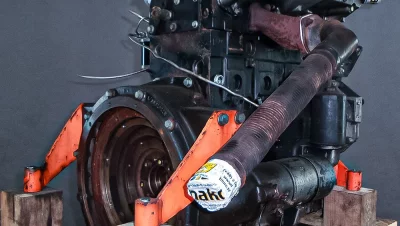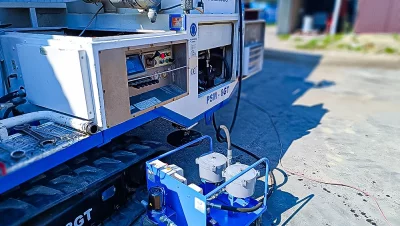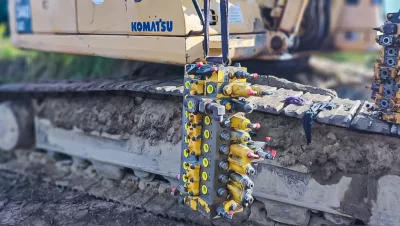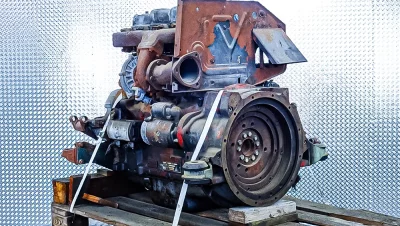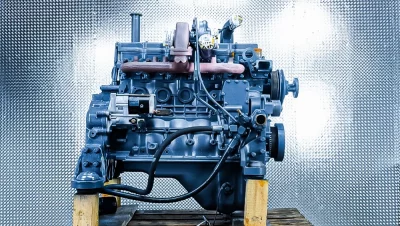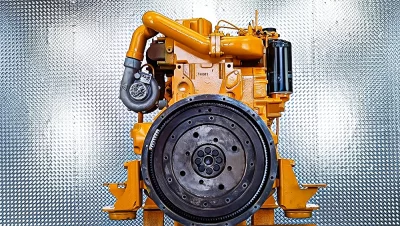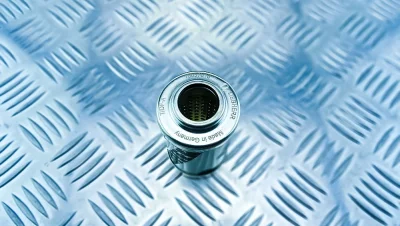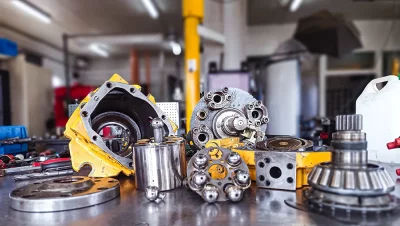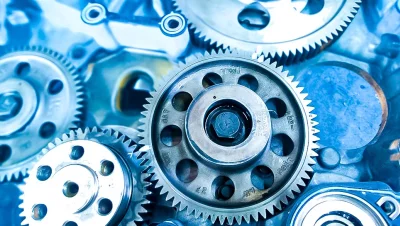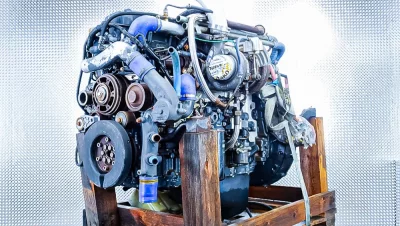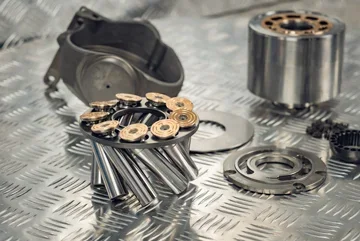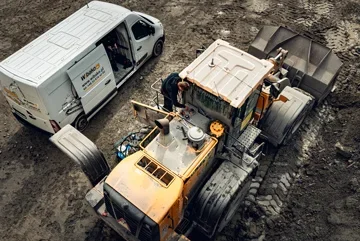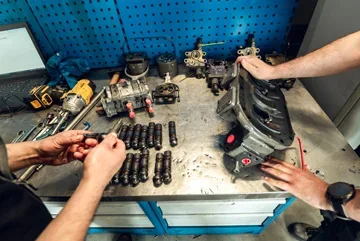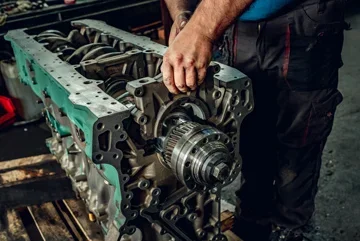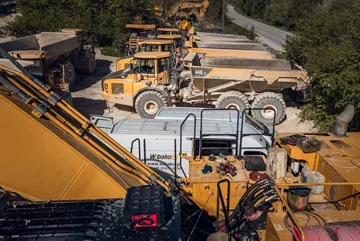Hydrokinetic transmission
Hydrokinetic transmission is colloquially called a torque converter or torque transformer, which accurately reflects the specifics of its operation, as this element serves as a clutch and is mounted between the gearbox and the internal combustion engine - usually directly to the flywheel housing.
The hydrokinetic drive system consists of the following elements: hydrokinetic transmission, mechanical gearbox, and drive axles.
Principle of operation of the hydrokinetic transmission
The hydrokinetic transmission uses fluid energy (oil) and allows for an increase in torque up to 3.5 times, and the highest value is achieved during startup, when the machine is most heavily loaded.
The value of torque is directly dependent on the speed of fluid rotation, and in some machines, an innovative solution has been implemented, which involves adding a planetary gear to the hydrokinetic transmission to increase the maximum torque and improve the efficiency of the system.
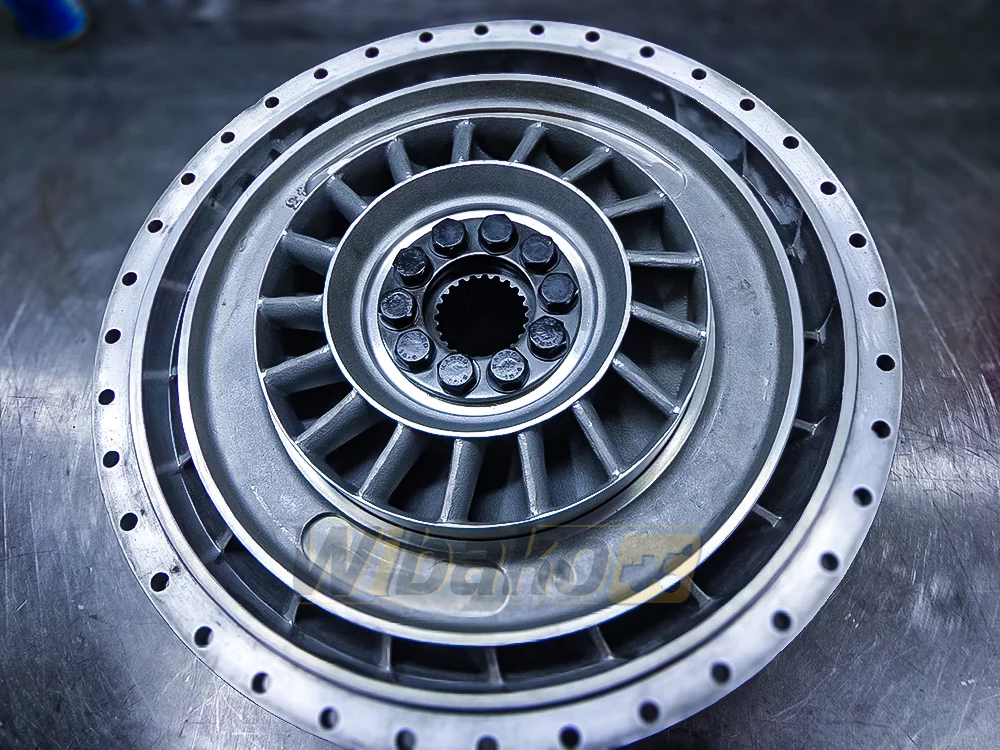
Functions of the hydrokinetic transmission
The transmission, or torque converter, plays a very important role in the machine - it allows for automatic and continuous transmission of torque, which in turn translates into smooth operation of the entire gearbox and increases the durability of the drive system.
To increase the efficiency of the converter, as well as the entire system, it is necessary to heat the oil in the transmission immediately after starting the internal combustion engine, and a good practice to shorten this time is to brake the machine with the main brake.
The coupling process is gentle, which contributes to the extension of the life of the components involved in the entire process. It is this inconspicuous element that protects the internal combustion engine from the risk of overloading due to increasing external loads.
It is also worth mentioning the gentle start, high work culture, and effective damping of torsional vibrations. A distinguishing feature is the lack of a rigid connection, so in the event of transmission overload, there is no danger of overloading the drive system.
This type of technological solution works where smooth driving is more important than dynamics.
As it happens in life - there are no perfect solutions and in this case, there are also disadvantages, which include, among others, an increase in fuel consumption or the production of too much heat. Regeneration of this element is usually not the cheapest.
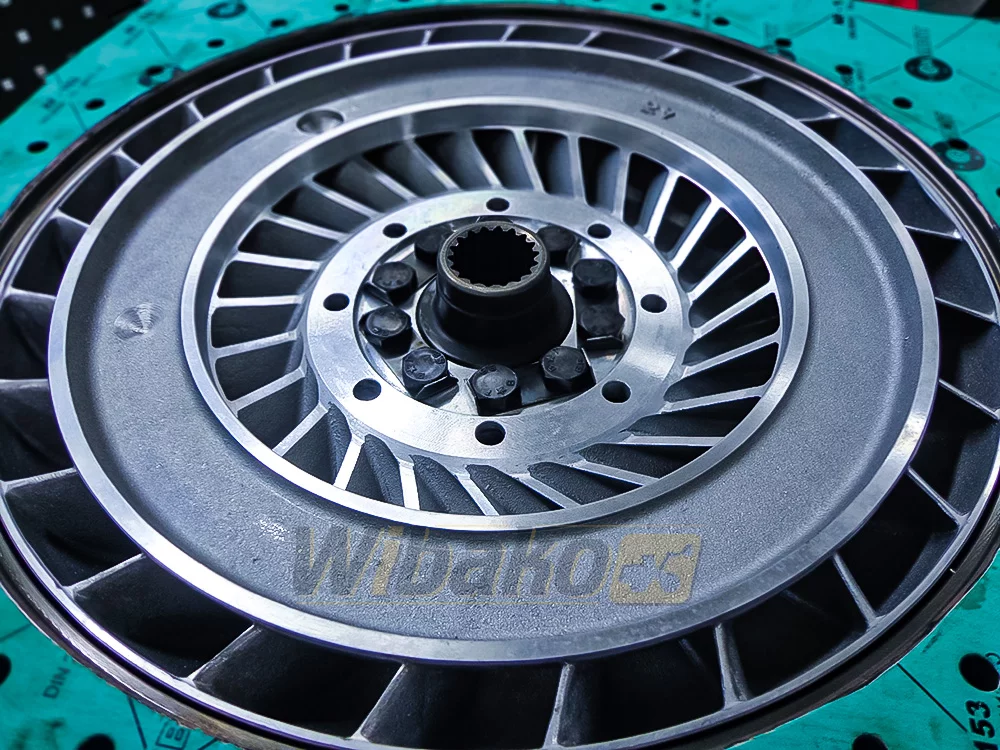
Construction and principle of operation
The basic structural elements of the converter include a pump, turbine, torsional vibration damper, and a one-way steering wheel. It is the use of a steering wheel rotor that distinguishes the transmission from a regular hydrokinetic clutch.
The pump rotor is connected to the internal combustion engine (more precisely to the flywheel ring or crankshaft). On the other hand, the turbine rotor is connected to the output shaft and the gearbox. Both rotors are not directly connected, and the distance between them is small and usually about 2-3 mm.
With the start of the internal combustion engine, the oil flow in the transmission begins, which is directed to the pump rotor. Then (as a result of achieving the appropriate value of kinetic energy) the oil moves to the turbine rotor, which in turn causes its movement.
In this way, kinetic energy using the rotary movement of the fluid is converted into mechanical energy. The operating speeds of the pump and turbine are different, so they remain in motion.
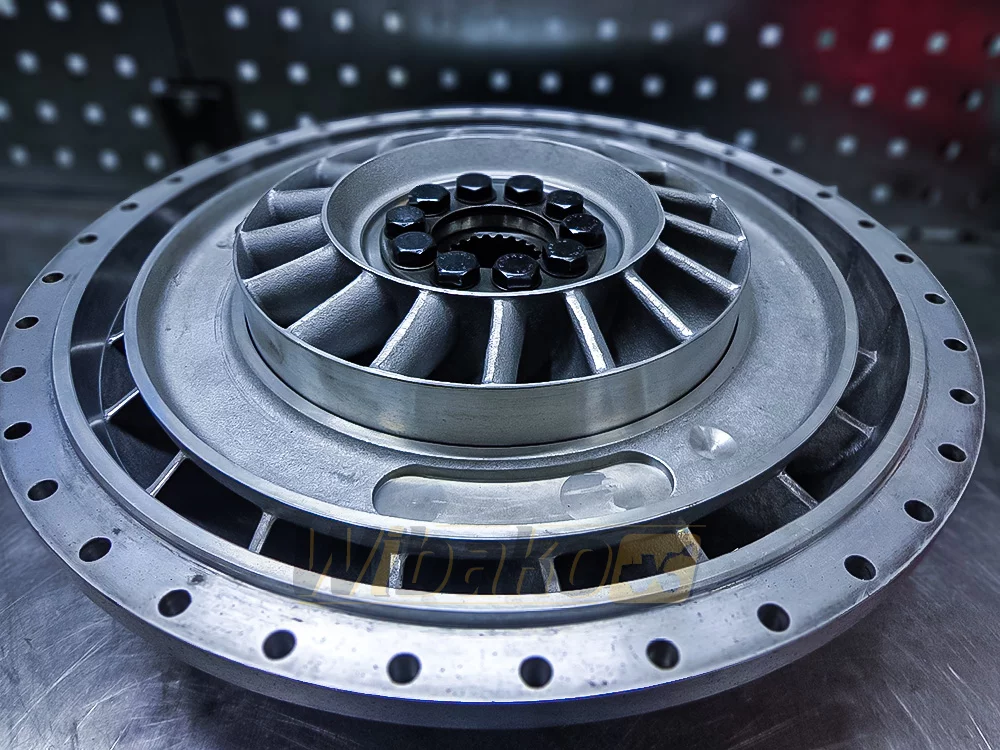
A very important element of the construction is the steering wheel rotor, which is responsible for strengthening the torque by the so-called steering wheel reaction moment. In short, the steering wheel changes the energy parameters of the fluid.
There is slippage between the pump rotor and the turbine rotor, i.e. the number of revolutions entering the transmission is higher than the number of revolutions coming out.
A very interesting solution is the use of a transmission lock (bridging clutch), which operates in certain operating modes, eliminating this slippage and thus temporary power drops. This allows for the transfer of drive without slippage, which takes place efficiently and unnoticeably.
Engaging the transmission lock (i.e. starting the so-called lock-up) is done by pressing a dedicated button on the control console, and the regulation of this function (taking place automatically) takes into account many signals, primarily the torque of the engine and which gear is engaged at a given moment.
Thanks to the use of lock-up, fuel consumption is reduced, and the efficiency and driving dynamics are improved.
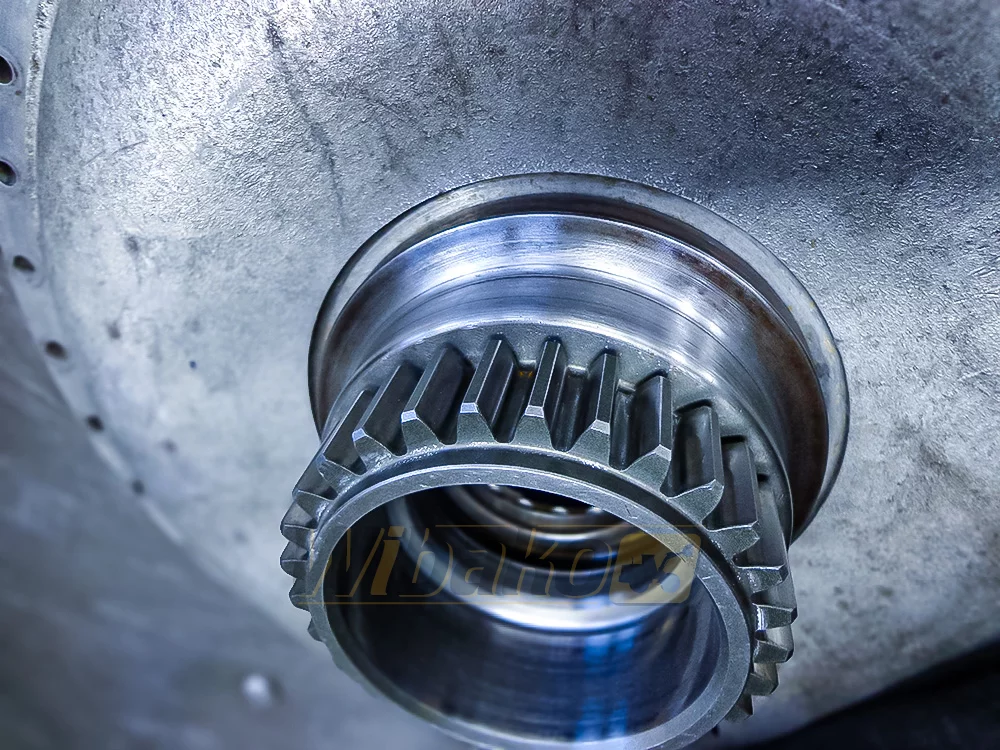
Only good quality oil!
The oil circulation in the converter is directly connected with the oil circulation in the gearbox - the oil is drawn from the gearbox oil pan to the transmission using a gear pump (through a suction filter).
Compared to hydrostatic systems, oil in hydrokinetic systems must meet more stringent requirements in terms of quality (appropriate viscosity, resistance to oxidation and foaming, good lubricating properties, and appropriate friction characteristics).
Usually, ATF (Automatic Transmission Fluid) oils are used, which are produced based on appropriate synthetic or mineral oils and are enriched with appropriate refining additives. They are also characterized by a special, usually red or green color, to clearly distinguish it from engine oil.
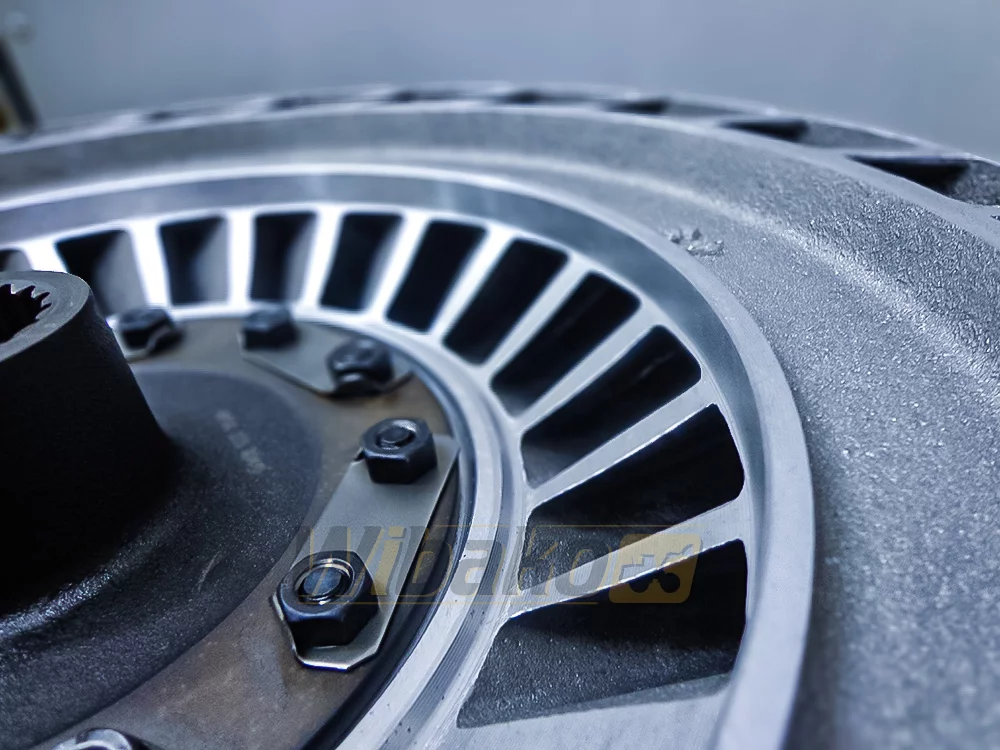
When selecting oil for a given transmission, it is absolutely necessary to follow the manufacturer's guidelines and opt for quality. A poorly chosen one can lead to damage and failure. The description of standards and the exact oil specification can be found in the service book. By investing in good quality oil, we can be sure that our transmission will be effectively protected.
The oil is cooled by an external circuit, and a very dangerous phenomenon is its overheating - among the main causes, one can mention primarily its too low level or a dirty radiator.
Obviously, the hydrokinetic transmission, like any other component, wears out over time and is prone to damage. A decrease in efficiency, fluctuating revolutions during steady driving, strange noises, or simply the feeling of a "slipping" clutch (known to users of cars with a manual gearbox, in which the clutch is already worn out) should be an impulse to verify the condition of this extremely important element, which is undoubtedly the converter. Regeneration is a relatively expensive service, so a more common practice is its replacement.



